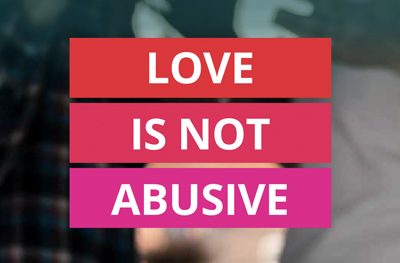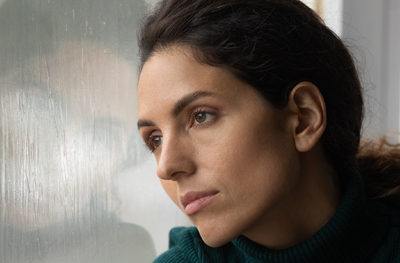Conflict happens when we discover we disagree with another person about something – which can be a useful discovery if we make an effort to handle it in the right way. It often carries with it some strong feelings, which have the potential to either fuel a process of problem-solving, negotiation, and resolution – or more heated conflict into all out war!
Conflict that is quite minor may not need any kind of thoughtful process to resolve it. A little time may suffice; although how you feel about it and how your partner, friend or colleague feels may vary.
Even with the best intentions, not all conflict can be resolved immediately. Accepting change in a relationship – new ideas, different ways of thinking and going about things – may need some time for adjustment.
IMPORTANT
- A healthy relationship is an evolving, changing relationship. It is flexible and able to adapt to changing needs, beliefs, values, ideas, and circumstances.
- Conflict is an inevitable and unavoidable part of a healthy relationship. That’s why knowing how to work with conflict is so important.
The Potential of Conflict
Positive Potential
Dealt with well, conflict can have some quite positive outcomes for a relationship:
- People can get to know each other better: what they think, how they feel, and what is important to them.
- Energy is released that can break through obstacles to make necessary change and improvement occur.
- It can clarify and ‘clear up’ false beliefs, misconceptions and false assumptions.
- It can disperse tension and stress, and bring relief and relaxation.
- It can help a relationship evolve, move forward, and strengthen.
Negative Potential
Conflict that is dealt with poorly can have quite negative consequences for a relationship:
- Conflict that is prolonged and not properly ‘worked with’ can be very damaging for both people and the relationship.
- Avoiding conflict can cause anger and resentment to build up and explode, causing damage hugely disproportional to the issue that caused the conflict in the first place.
- Suppression of conflict prevents opportunities for individuals to make the changes and adjustments necessary in a relationship, and to stay ‘connected,’ when faced with the inevitable emergence of differences and different needs.
- To ignore conflict is to ignore and devalue the very differences that may have attracted 2 people to each other, and that give the relationship energy and variety.
- The more poorly conflict is handled, the more trivial will be the things that trigger it and the more habitual conflict will likely become.
- Conflict left unresolved can cause growing confusion, exaggeration, and feelings of powerlessness, helplessness, and despair – ingredients that can contribute to the development of anxiety or depression.
Working with Conflict
Working with conflict means resolving conflict by using it to achieve a positive outcome, or at least an outcome that is better than continuing conflict.
There are a number of ‘tools’ and guidelines that are generally needed for this task:
You need to have the will
You have to be genuine about having the will to resolve conflict. Are you prepared to make concessions and do the work, or do you really just want to vent anger or resentment?
You will need to say how you feel, but that is quite different to launching a personal attack, blaming, or accusing – all of which are counter-productive.
‘Set the stage’ for working with conflict
- If you have the energy and you are calm enough (if not, delay), identify, acknowledge, say what the conflict is in your view, and allow the other person to express his/her view (without interrupting or being ‘hooked’ into an argument).
- Decide that for your part you will remain calm and respectful (even if the other person doesn’t).
- Decide that you won’t make things worse by using put- downs, making nasty remarks, accusing, blaming, screaming, shouting or threatening, or by being loud or overbearing.
- Decide that you won’t try to get your own way by using tears, false information, aggression, anger, or manipulation (like using guilt or mind games).
• Acknowledge the emotion that the other person is feeling around the conflict. - Ask the other person if he/she would be prepared to help work out a solution with you or a way of resolving your difference.
- Say how you feel about the issue without elaborating, blaming, insinuating, or accusing. Your feelings are valid but, if you take them out on the other person, chances are he/ she will become angry and you will lose the opportunity to discuss the issue.
Having both acknowledged the conflict, and having agreed to work it out, decide together when you will do so.
Now may not be a good time, because of high emotion, too little energy, or the time, place or circumstances are inappropriate.
Explore and define the problem
- It is crucial to effective conflict resolution to clearly define the problem together. There are several things to consider here:
− In defining the problem (and issues), don’t ‘rope in’ other issues and feelings that don’t belong; these are probably best dealt with at another time.
− Listen to each other patiently and without interruption.
Make a real effort to understand the other person’s point of view: Try to imagine yourself in his/her position. Be courteous, give the person your full attention (rather than rehearsing what you are going to say, in your mind), and allow him/her at least equal time to speak.
− Be really honest and open about what you might have done to make the conflict or disagreement worse. Don’t demand or expect the same concession from the other person.
− Avoid any criticism of the other person’s view and don’t discount his/her feelings. Should it be the case that the other person is rigid in his/her view, criticism may merely serve to reinforce the person’s rigidity. Freedom from criticism and pressure leaves open the possibility of a ‘change of heart.’
Find a Solution
This is the part of the process for resolving conflict that can require courage (to accept change), humility (being prepared to make concessions), empathy (appreciating their point of view and experience), and forgiveness (being prepared to ‘bury the hatchet,’ and truly relinquish any ill-feeling, to allow for a fresh start).
Do some brainstorming: think of a range of ways in which your disagreement or conflict could be resolved:
- What do you both need or want?
- How would things need to be different for you both to feel comfortable?
- What would need to change?
- What compromise or concessions are you both prepared to accept?
Remember to remain calm, patient, and respectful. - Conflict resolution works only when you don’t need, or insist on gaining, the upper hand – which just makes the other person the loser. Some immediate compromise may be necessary. In time, one or both of you may feel differently and have a change of heart – away from the more definite position currently held. Sometimes, being prepared to compromise a little can go a long way to cooling down the conflict and any likelihood of it continuing.
- Conflict resolution is about working together to find a solution that doesn’t leave either of you feeling cheated or the loser. If you win, the chances are, you have lost. The problem will merely have been obscured, and the other person’s feelings overridden. Both will likely return with a vengeance!
- The real value of any solution is that it can pass the test of these questions:
− Does this solution leave us both sufficiently satisfied not to want to harbour anger, resentment, annoyance or ill will, from now on?
− Does this solution leave me feeling heard, respected, and valued?
− Does this solution allow me to be true to myself and my needs?
Carry out the solution
- Write down what you have both agreed to work on, do, or change.
- Carry out the solution.
- If something happens that means you can’t keep up your part of the agreement, discuss this openly and honestly with the other person, and renegotiate an agreeable alternative.
If a solution doesn’t look like it’s going to work, invite the other person to work with you on finding a new one.
Agree on a date for review
- Agree on a date to review how well the solution has worked or is working.
If there is a problem, you can work together to solve it before conflict occurs again.
What to do if things can’t be worked out
Sometimes, with the best will in the world, it just doesn’t seem possible to resolve a conflict ourselves – perhaps because feelings are too strong, or the issues are very difficult or complicated. A third person from outside the situation can be very helpful in providing some objectivity, assisting us to think more broadly and creatively, and perhaps to make better sense of what we want, mean, feel, and can reasonably expect of each other.
Because conflict resolution requires time, energy, honesty, and vulnerability, it pays to try to find the right person to help you ‘first time around’ rather than having to go over the matter again with someone else.
Speak to your doctor, or contact a health professional to have someone recommended to you. (Obviously, you will need to discuss this with, and gain the agreement of, the person with whom you are in conflict.) It is rarely the case that conflict can’t be resolved with some competent assistance.
Summary of Tools and Guidelines for Resolving Conflict
- You need to have the will
- Set the stage for working with conflict
- Explore and define the problem
- Find a solution
- Carry out the solution
- Agree on a date for review
- What to do if things can’t be worked out





